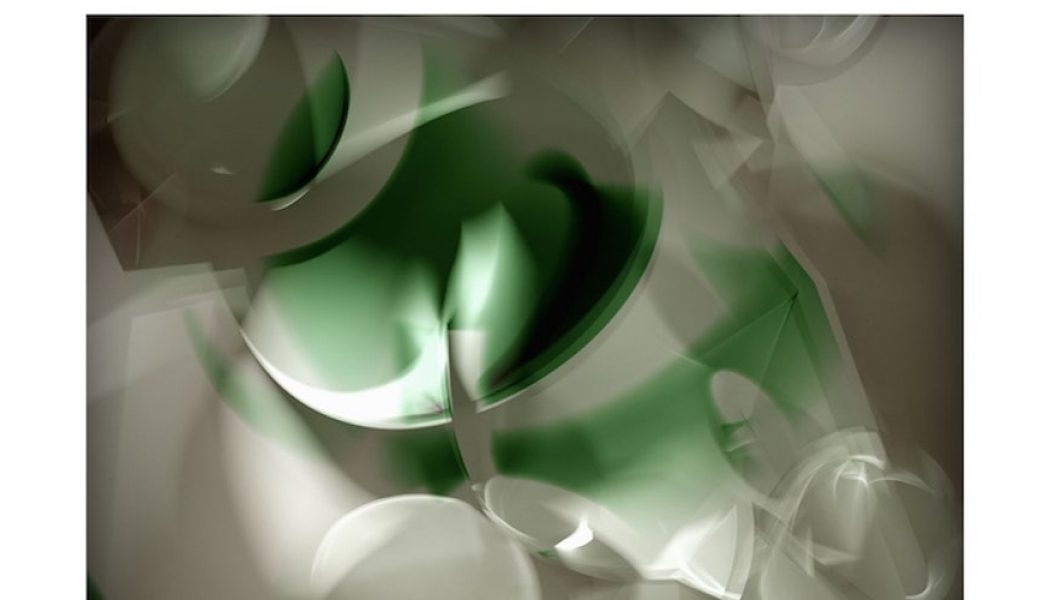
Most producers in electronic music tend to work in a linear fashion: They start with a chosen style or set of ideas and move gradually forward with them, making incremental progress toward their larger vision. Not Beatrice Dillon. An unsuspecting listener presented with a half dozen of the London musician’s releases might easily assume they were the work of six different people. A 20-minute cassette with Germany’s Gunnar Wendel collected fragments of a noise performance; a pair of albums with composer Rupert Clervaux alternated percussive concision with freeform drift. Themed mixtapes—like a journey through Smithsonian Folkways’ archives or a guided tour of RVNG Intl.’s idiosyncratic catalog—comprise a surprising proportion of her discography. In the absence of anything like an identifiable sound, she has developed a singular sensibility: inquisitive, inventive, attuned to textural nuance and the power of a well-timed surprise. She may be everywhere and nowhere at once, but her catalog suggests its own hidden logic when taken together.
Workaround, her debut album, doesn’t sound much like anything she has done before—which is to be expected—but it’s readily apparent that this is her most ambitious record yet. Putting her rhythmic instincts front and center without bowing to convention, she reconciles her fondness for dance music with the more esoteric tastes she developed working at London’s Sounds of the Universe, a record store with deep holdings in global rarities. Though the 14 tracks range in style and duration, from hypnotic club cuts to brief, abstracted etudes, they all share a palette of scratchy drum machine and glistening FM synths; virtually all are paced at roughly 150 beats per minute, so that they feel less like standalone compositions than variations upon a single, overarching theme.
That uncommon tempo, pitched somewhere between techno and drum’n’bass, is an inspired choice. For one, it removes Dillon’s music from the workaday context of most contemporary dance music; the body registers the beats’ power, but the brain struggles to find a precedent. It’s also an unusually flexible tempo, conducive to both quick syncopations and laid-back, half-time grooves. Informed by dancehall reggae’s lurching cadence, her rhythms lunge and snap, complementing the synthesizers’ staccato attack. And even at such comparatively high speeds, the machine-tooled drums and electronics leave plenty of negative space. This all results in a marvelous paradox: Despite the music’s rigidity, it breathes like a living thing.
Over this skeletal rhythmic framework, Dillon drapes a surprising array of sounds sourced from friends and collaborators: the liquid bounce of UK bhangra musician Kuljit Bhamra’s tabla; scraped strings from cellist Lucy Railton, who played on Mica Levi’s Jackie score; rainbow-streaked pedal steel from Jonny Lam, whose CV includes credits with Norah Jones and Pharaoh Sanders. On “Workaround Two,” Laurel Halo’s vocoder and synths intertwine with Verity Susman’s airy saxophone contrails; UK bass musicians Batu and Untold also turn up in the credits, along with Senegalese griot Kadialy Kouyaté. But the form these pieces take is more like collage than real-time collaboration: With the exception of “Workaround Two,” in which Dillon dictated exactly what she wanted from her players, most of her guests’ contributions were created around a pair of demo tracks that Dillon eventually scrapped, freeing her to edit, manipulate, and recontextualize their parts as she would any other sample.
Those dueling processes—improvisation vs. cut-and-paste, real-time exchange vs. the infinite possibilities of digital editing—are the unspoken theme at the heart of Workaround: It’s a record about control. “The computer always wins, that was my phrase,” Dillon told The Guardian of her philosophy going into the record. The album’s noticeable lack of reverb, she pointed out, banishes any illusion of musicians jamming together in real time, in a single room. Instead, the album’s airless, clinical atmospheres intentionally suggest the pristine, brushed-metal gleam of a brand-new laptop, fresh from the box. At a time when so many dance musicians strive to emulate vintage sounds (whether by means of battered analog equipment or digital plugins that emulate effects like tube distortion and tape warble), the album’s unsentimental polish is all the more exciting. It’s that rarest of creatures in electronic music: something we haven’t actually heard before.
Dillon cites the influence of visual artists Tomma Abts and Jorinde Voigt on the album’s interplay of shape and hue, an inspiration that can be detected in the music’s flattened, two-dimensional quality. Individual sounds like kora and standup bass become severed from their origins and reduced to abstractions—blocks of color, shapes on a page, forms being dragged about within the empty white rectangle of a computer screen. There, detached from the messiness of meatspace, Dillon can make the most of their contrasting textures: the graceful curl of the pedal steel set against the unerring linearity of digital drums; crisp, “Diwali”-like claps cushioned by dub-techno memory foam.
Despite the nimble rhythms, there’s a prevailing sense of patience, even stasis. It’s a factor of the music’s repetitive nature, both within individual tracks and across the album as a whole. But that lulling serves a secret purpose, setting you up for a surprise when a particularly captivating sonic object comes rolling across the stereo field. There’s a four-note riff in “Workaround Two” that sounds like a cross between Japanese city pop and a smartphone ringtone, and the fact that it happens just once and disappears in the blink of an eye only makes it that much more riveting.
Though Workaround’s second half is anchored by one of the album’s highlights—“Square Fifths,” a fractal waterfall of icy rave stabs over tabla and a groove that hints at dembow—that song is followed by a sequence of short, largely interchangeable percussion sketches that all sound like minor variations on the same basic idea. In another context, those might be taken for DJ tools—rhythmic loops for DJs to juggle to their hearts’ content. But even that nod to club functionalism seems appropriate for this curious and captivating record. In an album as intentional as this one is, the choice to include these passages is surely significant: they feel like pages torn from Dillon’s notebook, equations worked out in pursuit of electronic music’s version of a theory of everything.
Listen to our Best New Music playlist on Spotify and Apple Music.









